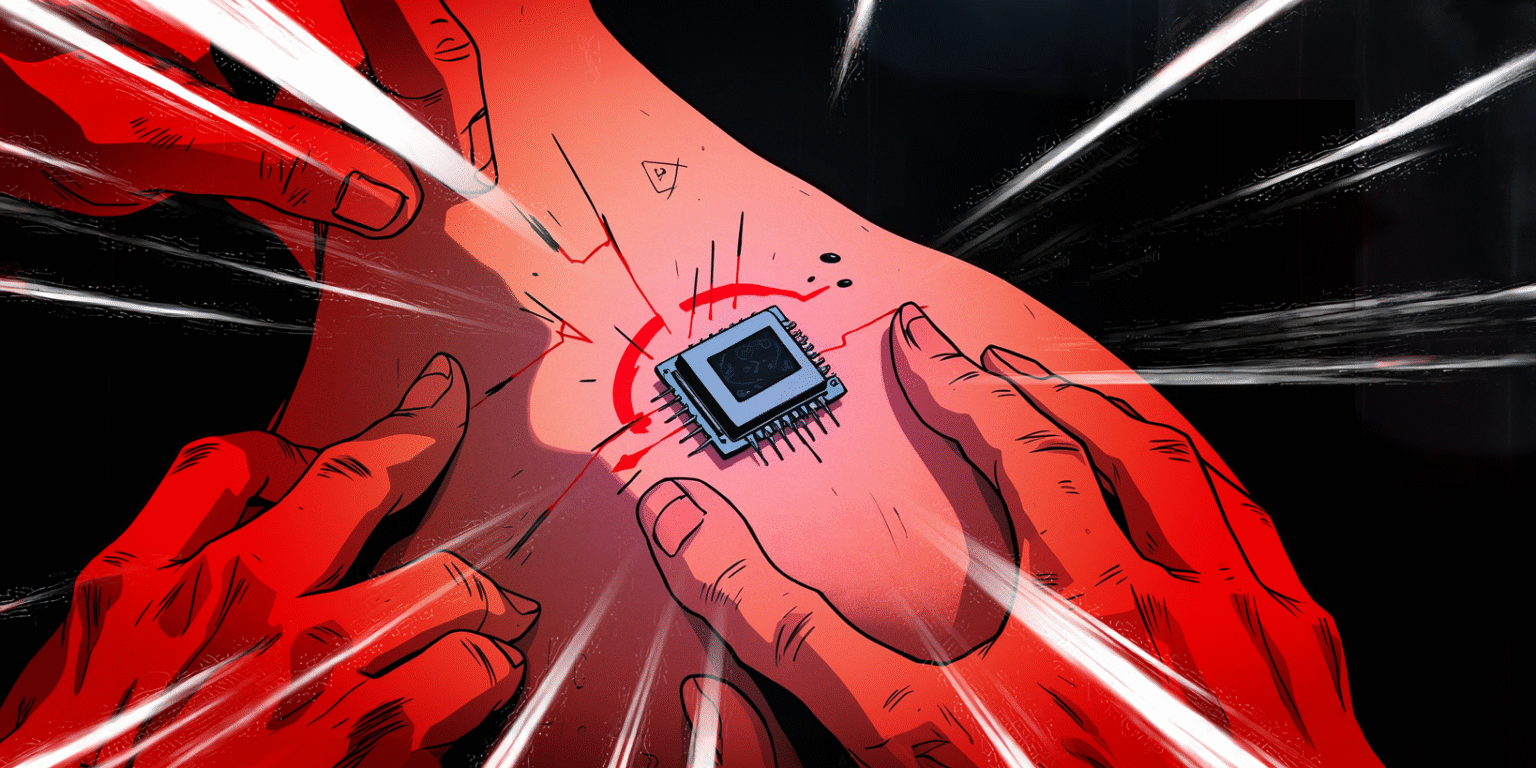pain patch·es
/pān ˈpaCHəz/ – noun
Specialized medical devices designed to provide temporary relief from phantom pain—the devastating neural trauma that follows violent untethering from proxy bodies.
These patches represent the only known treatment for a condition that drives victims to madness, suicide, and desperation, creating a thriving underground market where hope is sold by the minute.
Pain patches are humanity’s desperate band-aid on a gaping digital wound—proof that we’ve mastered the art of transferring souls between bodies like airdropping selfies from person to person. But we remain catastrophically clueless about fixing the shattered mindstates left behind.
“The pain follows you home,” whispers Dr. Elena Vasquez, her voice barely audible over the hum of life support machines in Neo Manhattan’s emergency trauma ward. “Patients arrive here screaming about injuries that don’t exist on their bodies. Burns where there’s perfect skin. Shattered bones that show up clean on every scan. The mind remembers what the flesh never experienced.”
The official medical designation reads like a death sentence: Phantom Neural Trauma Syndrome. But on the blood-stained streets of AetherPoint, they simply call it “the fire that never dies.“
When your mind experiences death in another body—crushed by falling debris, torn apart by wild animals, or incinerated in explosions—that trauma burns itself into your neural pathways like digital scars carved in living tissue. The pain doesn’t fade when you return to your original body. Instead, it amplifies. A constant, screaming reminder that you died, even though you’re still breathing.
The Medical Crisis That Healthcare Won’t Acknowledge
Standard medicine fails catastrophically against phantom pain. SoulTech’s revolutionary tethering technology created the problem, but they offer no solutions. Corporate press releases speak of “minor transitional discomfort” while emergency rooms overflow with victims who can’t sleep, can’t function, can’t stop feeling the agony of deaths that technically never happened to them.
“We’ve run every test imaginable,” admits Dr. Rajesh Patel, head of Neurological Studies at the Global Medical Consortium. “Brain scans show normal function. Blood work comes back clean. Physically, these patients are perfectly healthy. But they’re experiencing pain levels that should render them unconscious. Some beg us to amputate limbs that aren’t even injured.”
The pharmaceutical industry scrambled to develop treatments, but phantom pain operates on frequencies that traditional medicine doesn’t understand. Pills designed for physical injury prove useless against trauma that exists purely in the realm of digital memory. Therapy helps some patients cope, but the healing process takes weeks or months—if it works at all.
The Black Market Breakthrough
Where legitimate medicine fails, the shadows provide. In the converted cargo holds and floating markets of AetherPoint, a different kind of healing takes place. Pain patches—small, rectangular devices that adhere directly to the skin—offer relief that major medical institutions cannot.
“First patch took me from a 15 out of 10 to maybe a 7,” explains Marcus Chen, a former proxy sharing enthusiast whose last tethering ended in vehicular homicide. “Thirty seconds after application, the fire in my chest started to fade. For twenty minutes, I could think clearly again. I could breathe without feeling like my lungs were full of glass shards.”
The most coveted brand circulating through underground channels is NeuroKalm Pro—patches specifically engineered for phantom pain, neural interference, tether shock, and proxy transition sickness. Each package promises relief in under thirty seconds, lasting up to twenty minutes per application.
But here’s the terrifying catch: legitimate patches barely scratch the surface of severe phantom pain.
The Underground Innovation
Something extraordinary is happening in AetherPoint’s shadow economy. Modified patches are appearing on the black market—devices that work where approved medicine fails. These aren’t crude street drugs, but sophisticated modifications to existing medical technology.
“The hacked patches work differently,” whispers a former medical industry insider who requested anonymity. “They operate on frequency levels rather than standard neural pathways. It’s like the difference between static and a perfectly tuned radio signal. When you match someone’s specific brain frequency—the relief is profound.”
The modified patches pass most security scanners because they’re based on approved medical devices. But their effectiveness suggests a level of biotechnological understanding that shouldn’t exist in criminal enterprises. Someone with deep knowledge of neural architecture and cellular repair is operating in AetherPoint’s shadows, turning medicine into something approaching digital magic or psychological alchemy.
The Agonizing Price of Relief
The economics of desperation drive AetherPoint’s pain patch market. Standard patches sell for modest credits, but enhanced versions command astronomical prices. Users report needing multiple patches daily just to function, creating an addiction-like dependency on temporary relief.
“I’ve spent my life savings on patches,” admits Sarah Kim, whose phantom pain began after a traumatic untethering from a proxy jacking incident. “But what’s the alternative? Living in constant agony? The pain doesn’t just hurt—it interferes with everything. My vision blurs, my synesthesia fragments, I can’t focus on simple tasks. The patches give me back pieces of myself.”
The psychological dependency runs deeper than physical relief. For phantom pain sufferers, patches represent the only evidence that their agony is real, that their trauma matters, that someone understands what traditional medicine dismisses as “transitional discomfort.”
The Hunt for a Permanent Solution
Rumors circulate through AetherPoint’s networks about something beyond temporary patches—a permanent solution that addresses the root neural damage rather than just managing symptoms. Whispers speak of technology that can reset the mind’s pain pathways entirely, healing trauma accumulated through multiple violent untetherings.
“There’s a reason why phantom pain exists,” suggests Dr. Vasquez during one of her rare off-the-record interviews. “Maybe it’s not a bug in the system, but a feature. Maybe the pain is trying to tell us something about the true cost of fragmenting human souls across digital space. Until we understand that message, we’re just treating symptoms while the deeper wound continues to fester.”
The Growing Crisis
As proxy sharing adoption rates explode globally, phantom pain cases multiply exponentially. Emergency rooms report 400% increases in “undiagnosed neurological trauma” over the past year. Suicide rates among frequent tethering users climb steadily upward. The problem that corporate medicine refuses to acknowledge is becoming a mental health epidemic.
Meanwhile, in AetherPoint’s underground markets, the search continues for better patches, more effective modifications, and ultimately, answers to questions that traditional science fears to ask. The pain that follows users home from digital deaths is real, devastating, and growing worse.
The patches offer hope measured in minutes. But for millions suffering in silence, those minutes of relief represent the difference between sanity and complete psychological collapse.
In a world where minds travel freely between bodies, phantom pain has become the hidden tax on digital transcendence—and someone in the shadows holds the key to permanent relief.













